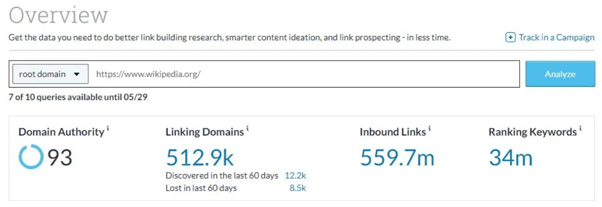In this article, we will delve into the world of link-building strategies, while also focusing on mistakes to avoid.
Obsah
Understanding Link-Buildingu in the Context of SEO
Effective Link-Building Srategies
Using Social Media for Link-Building
Meassuring the Success of Link-Building Startegies
Common Link-Building Mistakes to Avoid
Introduction
In the hugely competitive environment of the digital world, gaining a top position in search engine rankings is almost akin to finding treasure. It's not just about being seen; it's about being recognized as a trusted and authoritative source in your field. Among the myriad strategies used to achieve this goal, link-building stands out as the cornerstone of search engine optimization (SEO). But why is it so important?
At its core, link-building is about making connections. It's the process of getting hyperlinks from other websites to yours. These links are not only the way that users navigate the web, but also a vital signal to search engines like Google that indicates the relevance and quality of your site. In fact, Google's algorithm updates continually confirm the importance of quality backlinks in determining search rankings.
However, there's a catch. Not all links are created equal.
Understanding Link-Building in the Context of SEO
In the most basic sense, link building is the practice of getting hyperlinks from other websites to yours.
Why is this important? When a website links to another, it is essentially conveying a vote of confidence. Search engines like Google use these votes to judge the credibility and authority of a website. The more quality links a website receives, the higher its potential ranking in search results. This process is part of a complex algorithm that determines where your website ranks in the vast amount of search results.
However, link building is not just about quantity. It's all about the quality of the links. Links from reputable, high authority sites carry more weight than links from lesser known, potentially spammy sources. It's a game of reputation by association - linking your site to authoritative sources can significantly boost your own site's standing.
.png?width=602&height=533&name=G%20(1).png)
Quality Vs. Quantity of Links
The debate between quality and quantity in link building is central to understanding effective SEO strategies. While it may be tempting to focus on collecting a high number of backlinks, the truth is that the quality of each link has a much greater impact.
Quality links are those that come from reputable and authoritative websites. These sites are considered trustworthy by search engines and a backlink from them is like a mark of approval for your website. It signals that your content is valuable and relevant. Conversely, links from poor quality or irrelevant sites can be harmful and lead to penalties from search engines.
Consider the social endorsement analogy: a recommendation from a recognized expert in your field carries more weight than multiple endorsements from sources with little or no credibility. In the world of SEO, a single link from a high-authority site, such as an established news site or a leading industry blog, can be worth much more than a series of links from obscure, unrelated sites.
Effective Link-Building Strategies
Building backlinks can seem like a fairly complex affair, but using the right strategies can significantly increase your website's rankings in search engines. So here are some of the most effective link-building techniques:
1. Content Creation and Promotion
- Create high-quality content: the foundation of effective link-building is creating content that is actually worth linking to. This can be informative blog posts, research studies, infographics or engaging videos. High-quality content naturally attracts backlinks because it provides value to other site owners and their audience.
- Promote your content: once you have fine-tuned your content, promote it through social media, email newsletters and other online platforms. The more visible your content becomes, the more likely different sites or people will link to it.
2. Guest Blogging
- Identify relevant blogs: look for blogs in your industry that accept guest posts. These should be websites with good domain authority and a relevant audience.
- Present interesting topics: when approaching these blogs, come up with unique, well thought out content ideas that will add value to their audience.
- Include a link to your website: Include a link to your website in the guest post. It should be natural and add value to the content.
3. Building Broken Links
- Finding broken links: use various tools to find broken links to websites in your field. These are opportunities where a link to your website could replace a broken link.
- Create relevant content: if you don't already have content that could replace the broken link, create it. The content should be relevant and valuable.
- Reach out to website owners: Contact the owners of the website, inform them of the broken link and suggest your content as a replacement.
These strategies are a combination of proactive content creation and strategic outreach. While they require effort and patience, their impact on your website's search engine rankings can be huge.
Using Social Media for Link-Building
Social networks are a powerful tool in the link-building arsenal. It's not just about getting links directly, it's also about creating opportunities for your content to be seen, shared and linked to.
- Creating shareable content: First, ensure that your content is shareable. This means it should be engaging, relevant and valuable to your target audience. Infographics, insider blog posts or videos are most commonly shared on social media platforms.
- Engaging your audience: regularly engaging your audience on social media increases your visibility and the likelihood that your followers will share your content. This engagement can include responding to comments, participating in discussions, and sharing relevant content from others.
- Building relationships with influencers: connect with influencers in your industry. If they share your content, not only will it boost your reach, but it can also lead to more backlinks as their followers and other websites adopt your content.
Measuring the Success of Link-Building Strategies
In order to gauge the effectiveness of your link-building efforts, it's essential to track specific metrics. These indicators will help you understand the impact of your strategies and provide direction for future improvement:
- Traffic from links: one of the most direct indicators of successful linkbuilding is an increase in traffic from links, which can be tracked using tools like Google Analytics. It shows, in short, how many visitors are coming to your site through external links.
- Domain and Page Authority: Tools such as Moz's Domain Authority (DA) and Page Authority (PA) help you understand the perceived strength of your site or specific pages. An increase in this score often correlates with successful link building.
- Number and quality of backlinks: Track your backlink status regularly using SEO tools and monitor both the quantity and quality of backlinks. Focus on the increase in links from high authority domains.

Common Link-Building Mistakes to Avoid
- Prioritizing quantity over quality: As mentioned above, the quality of backlinks far outweighs their quantity. Getting a large number of low-quality links can hurt rather than help your efforts to rank higher in search engines. Focus on getting links from reputable, authoritative websites.
- Buying links: This is a clear violation of Google's guidelines. Paid links can lead to severe penalties, including a significant drop in search rankings. Acquire links through legitimate means, such as quality content and genuine relationships.
- Ignoring paragraphing: Excessive use of identical text in paragraphs can appear to search engines as manipulative behavior. It is therefore important to use a natural and diverse range of text in each paragraph.
- Neglecting NoFollow links: While NoFollow links do not directly contribute to SEO rankings, they are still very valuable. They can increase traffic and help diversify your link profile, contributing to its natural image.
- Overlooking internal links: Internal links help search engines understand and index your website content. In this case, make sure you are also building a strong internal link structure.
Conclusion
Link-building is an important part of SEO that provides the foundation for higher search rankings and better visibility on the internet. By understanding the nuances between the quality and quantity of links and implementing strategies such as content creation, guest blogging, and the use of social media, you can build a solid backlink profile. However, measuring the success of your efforts and avoiding common pitfalls is essential to ensuring sustainable results.
As you embark on or continue your link building journey, remember that it's a marathon, not a sprint. It requires patience, perseverance and a commitment to quality. By following these guidelines, you won't just be chasing every link, you'll be building a reputable and authoritative online presence. The road to SEO success is a long one, but with effective link building strategies you are well on your way to the top of the search engine rankings.
If you still don't know how to get started with link-building, don't hesitate to contact us and arrange a free consultation. Our specialists will be happy to help you on your way to success.
FAQ
1. What is link-building?
It is the process of acquiring hyperlinks from other websites in order to improve your website's ranking in search engines.
2. Why is link quality more important than link quantity?
Quality links from reputable sites are more credible to search engines and have a greater impact on SEO.
3. How can social media be used in link building?
Social networks help in promoting content, increasing its visibility and encouraging backlinks.
4. What are common link building strategies?
Strategies include creating valuable content, creating guest blogs, building broken links, and promoting on social media.
5. How can I measure the success of link-building?
You can measure success through link traffic, improved domain authority, and the quality and quantity of backlinks.
6. Do NoFollow links have any value in link building?
Yes, they increase traffic and contribute to a diverse link profile, although they do not directly affect rankings.
7. What mistakes should I avoid when link building?
Avoid buying links, focusing only on the quantity of links, overusing identical text in paragraphs and neglecting internal linking.
8. How long does it take to see results from link building?
It is a long-term strategy; results are usually seen after a few months.


















